
Ayampe Beach: Ecuador's Hidden Coastal Gem
Discover Ayampe Beach in Ecuador: A serene coastal escape with golden sands, clear waters, diverse wildlife, and a charming village atmosphere. Perfect for nature lovers and surfers.
Nestled along Ecuador's pristine coastline, Ayampe Beach is a tranquil paradise known for its natural beauty and laid-back atmosphere. This small fishing village offers a perfect escape from bustling city life, making it a haven for nature lovers and those seeking relaxation. The beach is characterized by its golden sands, clear blue waters, and lush green surroundings, providing a picturesque setting for unwinding and reconnecting with nature. Ayampe is not just about its stunning beach; it is also a hub for diverse wildlife. The area is home to a variety of bird species, including the famous Blue-footed Booby, making it a fantastic spot for bird watching. The nearby Ayampe River adds to the charm, offering opportunities for kayaking and observing the rich marine life in the mangroves. Surfing enthusiasts will find the waves here ideal, whether they are beginners or seasoned surfers, thanks to the consistent swells. The village itself is a blend of rustic charm and modern comforts, with cozy accommodations, delightful eateries, and friendly locals who are always ready to share their stories. The local cuisine, featuring fresh seafood and traditional dishes, is a culinary delight that adds to the overall experience of visiting Ayampe Beach. With its serene environment and myriad of activities, Ayampe Beach promises an unforgettable getaway for all types of travelers.
Local tips in Ayampe Beach
- Visit during the dry season from June to November for the best weather.
- Bring cash as there are limited ATMs in the area.
- Don't miss the chance to try fresh seafood at local eateries.
- Rent a bike to explore the village and surrounding areas easily.
- Pack eco-friendly sunscreen to protect the marine life.
Ayampe Beach: Ecuador's Hidden Coastal Gem
Nestled along Ecuador's pristine coastline, Ayampe Beach is a tranquil paradise known for its natural beauty and laid-back atmosphere. This small fishing village offers a perfect escape from bustling city life, making it a haven for nature lovers and those seeking relaxation. The beach is characterized by its golden sands, clear blue waters, and lush green surroundings, providing a picturesque setting for unwinding and reconnecting with nature. Ayampe is not just about its stunning beach; it is also a hub for diverse wildlife. The area is home to a variety of bird species, including the famous Blue-footed Booby, making it a fantastic spot for bird watching. The nearby Ayampe River adds to the charm, offering opportunities for kayaking and observing the rich marine life in the mangroves. Surfing enthusiasts will find the waves here ideal, whether they are beginners or seasoned surfers, thanks to the consistent swells. The village itself is a blend of rustic charm and modern comforts, with cozy accommodations, delightful eateries, and friendly locals who are always ready to share their stories. The local cuisine, featuring fresh seafood and traditional dishes, is a culinary delight that adds to the overall experience of visiting Ayampe Beach. With its serene environment and myriad of activities, Ayampe Beach promises an unforgettable getaway for all types of travelers.
When is the best time to go to Ayampe Beach?
Iconic landmarks you can’t miss
Playa Ayampe
Experience the tranquil beauty and cultural richness of Playa Ayampe, a hidden gem on Ecuador's stunning coastline, perfect for relaxation and adventure.

El Refugio Ayampe Beach Deck
Discover the serene beauty of El Refugio Ayampe Beach Deck, where ocean views and local adventures await in Ecuador's coastal paradise.

Unmissable attractions to see
Playa Santa Marianita
Experience the tranquil beauty and vibrant culture of Playa Santa Marianita, a must-visit beach destination in Ecuador.

Mirador
Discover the breathtaking views of the Pacific Ocean at Mirador in Montañita, Ecuador's premier observation deck for stunning sunsets and vibrant beach culture.

Mirador de Salango
Experience breathtaking ocean views at Mirador de Salango, the ultimate observation deck in Ecuador's stunning coastal landscape.

Mirador Las Frigates
Experience the stunning coastline and vibrant landscapes at Mirador Las Frigates, a must-visit vista point in Machalilla, Ecuador.

Playa Curia
Escape to Playa Curia, a tranquil Ecuadorian beach known for its pristine sands and stunning sunsets, perfect for relaxation and exploration.

Museo Arqueologico De Salango
Discover the ancient treasures of Ecuador at Museo Arqueologico De Salango, a must-visit archaeological museum in the heart of Salango.

San Pablo beach
Experience the serene beauty and vibrant culture of San Pablo Beach, a must-visit coastal paradise in Ecuador.

Rio Chico, Puerto López-ECUADOR
Discover the breathtaking beauty of Rio Chico, Puerto López, a premier spot for birdwatching and local Ecuadorian cuisine amidst stunning coastal landscapes.

Playa Tortuguita
Explore the natural beauty and tranquil beaches of Playa Tortuguita, a pristine nature preserve in Machalilla, Ecuador, perfect for eco-tourism.

Playa los Ciriales
Experience the serene beauty of Playa los Ciriales, a hidden gem in Machalilla, Ecuador, perfect for relaxation and adventure seekers alike.

Humpback Whale Skeleton
Discover the stunning Humpback Whale Skeleton in Puerto López, a unique marine attraction that educates and inspires about ocean conservation.

Playa rosada
Discover the enchanting beauty of Playa Rosada in Machalilla, Ecuador, where pink sands meet crystal-clear waters for an unforgettable beach experience.
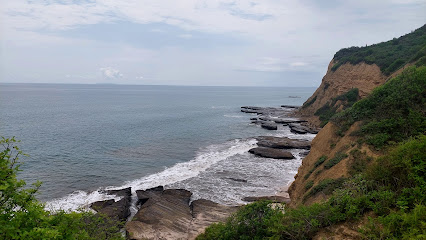
La Punta de Montañita
Discover La Punta de Montañita: A breathtaking hiking area in Ecuador with stunning ocean views and vibrant wildlife waiting to be explored.

Playa Coral
Explore the serene Playa Coral in Machalilla National Park, where golden sands meet crystal-clear waters, perfect for relaxation and adventure.

Letras Corpóreas Puerto López
Experience the artistic charm of Puerto López at Letras Corpóreas, a vibrant tourist attraction perfect for capturing unforgettable memories.

Essential places to dine
GUACAMAYO hospedaje resto/bar
Discover the perfect blend of relaxation and culinary delights at GUACAMAYO Hospedaje Resto/Bar in beautiful Montañita.

Los Orishas - Restaurante hostal
Experience authentic Ecuadorian flavors at Los Orishas - Restaurante Hostal, where every bite tells a story.

Selvamar
Experience delightful dining at Selvamar in Ayampe - where local flavors meet vibrant atmosphere along Ecuador's beautiful coast.

Mulata Ec
Discover exquisite Ecuadorian cuisine at Mulata Ec in Ayampe - where every dish tells a story and every view enchants.

Lido Beach & Grill
Experience fresh seafood and stunning ocean views at Lido Beach & Grill in Montanita – a must-visit culinary destination for beach lovers.

MAEO BEACH
Discover culinary delights at Maeo Beach in Montañita - where gastronomy meets beachside relaxation in an unforgettable atmosphere.

Ayampe Tacos
Experience authentic Mexican cuisine at Ayampe Tacos in scenic Ayampe - a must-visit culinary destination for travelers seeking vibrant flavors.

Los Corales
Experience authentic Ecuadorian cuisine at Los Corales in Ayampe - where delicious flavors meet coastal charm.
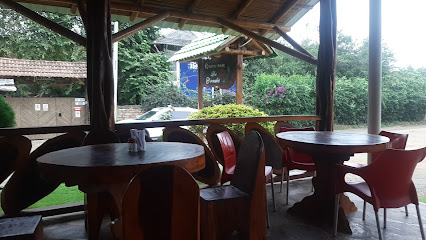
El Pacay en Ayampe
Discover El Pacay in Ayampe – where fresh local cuisine meets stunning coastal views for an unforgettable dining experience.

ArteSano Ayampe
Experience authentic Ecuadorian cuisine with fresh local ingredients at ArteSano Ayampe - a culinary delight in Ayampe's vibrant coastal atmosphere.

Malevo
Experience the vibrant atmosphere and delicious cuisine at Malevo in Ayampe – your ultimate dining destination!
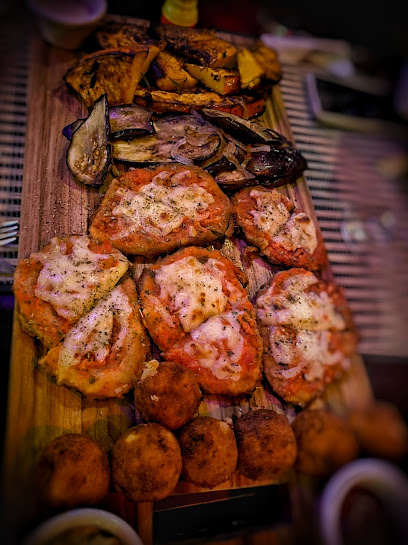
RESTAURANTE OCEANIC | FOOD | BEACH | TURISMO | PUERTO LÓPEZ | ECUADOR | RESTAURANT
Savor exquisite seafood and authentic Ecuadorian cuisine at Restaurante Oceanic with stunning ocean views in Puerto López.
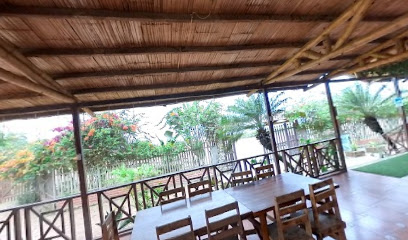
Siwiche restarante
Discover authentic Ecuadorian flavors at Siwiche Restaurante in Ayampe – where culinary excellence meets stunning ocean views.
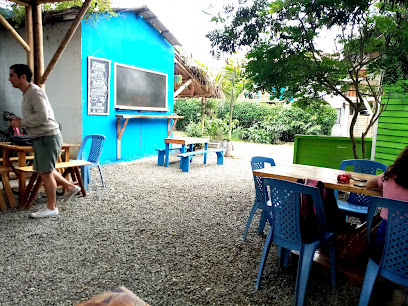
Resto bar La Góndola on the beach
Savor exquisite seafood and local flavors at Resto Bar La Góndola on Montañita beach, where every meal comes with stunning ocean views.

The Beach
Discover The Beach in Montañita - where culinary delights meet stunning ocean views for an unforgettable dining experience.

Markets, malls and hidden boutiques
Selina Montañita
Experience the vibrant culture and stunning beaches of Montañita at Selina Montañita, your ultimate coastal retreat.
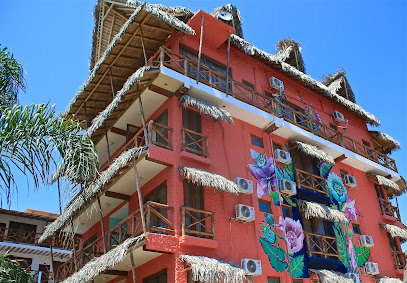
La Tortuga Hostel
Experience beachside bliss at La Tortuga Hostel in Ayampe, Ecuador - a cozy haven for travelers seeking adventure and relaxation.

Playa Ayampe
Explore the tranquil beauty of Playa Ayampe, a hidden gem on Ecuador's coast, perfect for relaxation and adventure in nature.
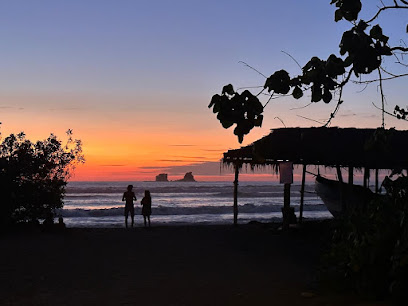
Ayampe Guest House
Discover the tranquil beauty and adventure of Ayampe Guest House, your ideal coastal retreat in Ecuador.

Ganso&Búho
Discover serenity and comfort at Ganso&Búho, a charming bed and breakfast in Ayampe, Ecuador, close to pristine beaches and vibrant local culture.

La Buena Vida Hotel
Discover tranquility and adventure at La Buena Vida Hotel, your perfect bed and breakfast getaway in Puerto López, Ecuador's coastal paradise.

The Mango House
Discover the charm of The Mango House in Ayampe, Ecuador, a serene guest house surrounded by nature, perfect for relaxation and coastal adventures.

Villas Los Olivos
Discover the serene beauty of Ayampe at Villas Los Olivos, a perfect retreat for relaxation and adventure on Ecuador's stunning coastline.

Tres Palmas Boutique Hotel
Discover the perfect blend of relaxation, adventure, and local culture at Tres Palmas Boutique Hotel in Montañita, Ecuador.

Ayampe
Experience the serene beauty and vibrant culture of Ayampe, Ecuador's coastal gem, perfect for adventure seekers and relaxation lovers alike.

Tienda Ayampe
Explore local flavors at Tienda Ayampe, a charming grocery store in the heart of Ayampe, offering fresh produce and authentic Ecuadorian products.

Vivero Cochapunko
Explore Vivero Cochapunko in Ayampe for a vibrant selection of local and exotic flowers, perfect for any occasion or simply to enjoy.
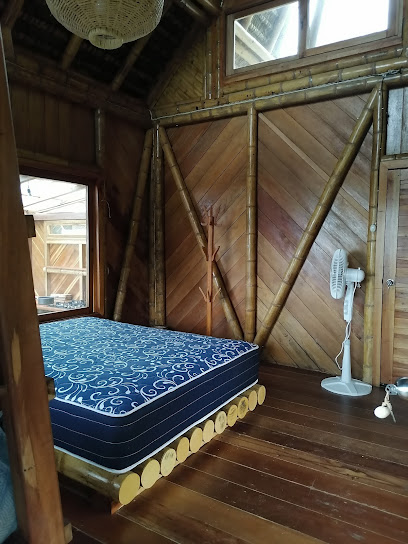
Yemaya Boutique
Discover unique fashion finds at Yemaya Boutique, where coastal charm meets Ecuadorian craftsmanship in Ayampe.

Souvenirs and crafts
Discover handcrafted treasures and authentic Ecuadorian souvenirs in Machalilla's vibrant arts scene.
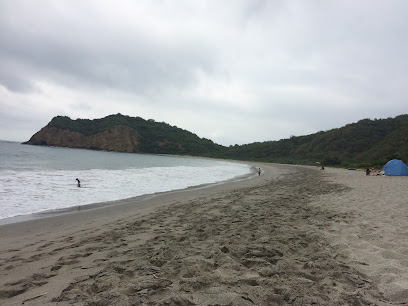
I Love Ayampe (Tattoo Shop)
Experience the artistry of I Love Ayampe Tattoo Shop, where your body art meets the beauty of coastal Ecuador.

Essential bars & hidden hideouts
Taverne 13 events
Experience the vibrant atmosphere and delicious cuisine at Taverne 13 Events in beautiful Puerto López, Ecuador.

The Barn
Discover the charm of Ayampe at The Barn - a cozy café offering delightful local flavors and a warm, inviting atmosphere for all visitors.

Los Orishas - Restaurante hostal
Experience the best of Ecuadorian flavors at Los Orishas - Restaurante Hostal, a culinary gem in Ayampe offering exquisite seafood and artisanal pizzas.

Selvamar
Experience the best of Ecuadorian coastal cuisine at Selvamar, a vibrant restaurant and bar in Ayampe offering fresh seafood and stunning ocean views.

Ayampe Tacos
Experience the vibrant flavors of Mexico at Ayampe Tacos, a top destination for food lovers in the heart of Ayampe, Ecuador.

Merman Beach Club
Discover the vibrant Merman Beach Club in Montañita, Ecuador, where stunning sunsets, refreshing cocktails, and an unforgettable beach atmosphere await.

TUCAN BAR, Olon
Experience the vibrant nightlife of Olon at Tucan Bar, where stunning ocean views and lively atmosphere create unforgettable evenings.

Malevo
Discover Malevo in Ayampe: an inviting restaurant and sports bar that blends local flavors with a lively atmosphere, perfect for a memorable dining experience.

Mali Thai & Asian Fusion
Discover authentic Thai and pan-Asian flavors at Mali Thai & Asian Fusion, a beachfront gem in Ayampe, Ecuador, perfect for food lovers.

Ancora Cabaña Beach
Experience the lively charm of Ancora Cabaña Beach, a vibrant bar in Puerto López, Ecuador, offering refreshing drinks and stunning ocean views.

El spot 1980 ayampe
Explore the flavors of Ecuador at El Spot 1980, Ayampe's premier restaurant offering a fusion of local delicacies and coastal charm.

La Vineria Ayampe
Discover the charm of La Vineria Ayampe, where exquisite wines meet a relaxing coastal atmosphere in the heart of Ecuador.

Sunset Bar
Experience breathtaking sunsets at Sunset Bar in Ayampe, a vibrant spot for cocktails and relaxation in Ecuador's coastal paradise.

RestoBar Happy Beach
Discover the flavors of Ecuador at RestoBar Happy Beach, where local cuisine meets breathtaking ocean views for a dining experience like no other.

Local Phrases about Ayampe Beach
-
- HelloHola
[oh-lah] - GoodbyeAdiós
[ah-dee-ohs] - YesSí
[see] - NoNo
[noh] - Please/You're welcomePor favor/De nada
[por fah-vor/deh nah-dah] - Thank youGracias
[grah-see-ahs] - Excuse me/SorryDisculpe/Lo siento
[dee-skool-pe/loh see-ehn-toh] - How are you?¿Cómo estás?
[koh-moh ehs-tahs] - Fine. And you?Bien. ¿Y tú?
[bee-ehn. ee too] - Do you speak English?¿Hablas inglés?
[ah-blahs een-glays] - I don't understandNo entiendo
[noh ehn-tee-ehn-doh]
- HelloHola
-
- I'd like to see the menu, pleaseMe gustaría ver el menú, por favor
[meh goos-tah-ree-ah behr ehl meh-noo, por fah-vor] - I don't eat meatNo como carne
[noh koh-moh kahr-neh] - Cheers!¡Salud!
[sah-lood] - I would like to pay, pleaseMe gustaría pagar, por favor
[meh goos-tah-ree-ah pah-gahr, por fah-vor]
- I'd like to see the menu, pleaseMe gustaría ver el menú, por favor
-
- Help!¡Ayuda!
[ah-yoo-dah] - Go away!¡Vete!
[veh-teh] - Call the Police!¡Llama a la policía!
[yah-mah ah lah poh-lee-see-ah] - Call a doctor!¡Llama a un doctor!
[yah-mah ah oon dohk-tohr] - I'm lostEstoy perdido
[ehs-toy pehr-dee-doh] - I'm illEstoy enfermo
[ehs-toy ehn-fehr-moh]
- Help!¡Ayuda!
-
- I'd like to buy...Me gustaría comprar...
[meh goos-tah-ree-ah kohm-prahr] - I'm just lookingSolo estoy mirando
[soh-loh ehs-toy meer-ahn-doh] - How much is it?¿Cuánto cuesta?
[kwan-toh kwehs-tah] - That's too expensiveEso es demasiado caro
[eh-soh ehs deh-mah-see-ah-doh kah-roh] - Can you lower the price?¿Puede bajar el precio?
[pweh-deh bah-hahr ehl pree-see-oh]
- I'd like to buy...Me gustaría comprar...
-
- What time is it?¿Qué hora es?
[keh oh-rah ehs] - It's one o'clockEs la una en punto
[ehs lah oo-nah ehn poon-toh] - Half past (10)Media (10)
[meh-dee-ah (dies)] - MorningMañana
[mah-nyah-nah] - AfternoonTarde
[tahr-deh] - EveningNoche
[noh-cheh] - YesterdayAyer
[ah-yehr] - TodayHoy
[oy] - TomorrowMañana
[mah-nyah-nah] - 1Uno
[oo-noh] - 2Dos
[dohs] - 3Tres
[trehs] - 4Cuatro
[kwah-troh] - 5Cinco
[seen-koh] - 6Seis
[says] - 7Siete
[syeh-teh] - 8Ocho
[oh-choh] - 9Nueve
[nweh-veh] - 10Diez
[dyes]
- What time is it?¿Qué hora es?
-
- Where's a/the...?¿Dónde está el/la...?
[dohn-deh ehs-tah ehl/lah] - What's the address?¿Cuál es la dirección?
[kwahl ehs lah dee-rehk-syon] - Can you show me (on the map)?¿Puedes mostrarme (en el mapa)?
[pweh-dehs mohs-trar-meh (ehn ehl mah-pah)] - When's the next (bus)?¿Cuándo es el próximo (autobús)?
[kwan-doh ehs ehl proh-ksee-moh (ow-toh-boos)] - A ticket (to ....)Un boleto (a ...)
[oon boh-leh-toh (ah ...)]
- Where's a/the...?¿Dónde está el/la...?
History of Ayampe Beach
-
Long before the arrival of European explorers, Ayampe Beach and its surrounding areas were inhabited by indigenous cultures. Archaeological findings suggest that the region was part of the Valdivia culture, one of the oldest known cultures in the Americas, dating back to around 3500 BCE. The Valdivia people were skilled in pottery, agriculture, and fishing, laying the foundational elements of the culture that persisted in the region.
-
The Spanish conquest in the 16th century brought drastic changes to the Ayampe region. Spanish explorers, in their quest for gold and new territories, encountered indigenous tribes and often clashed with them. The introduction of European agricultural practices and the establishment of colonial settlements altered the landscape and social fabric of the area. Despite these changes, the indigenous heritage remained resilient, influencing the cultural development of Ayampe.
-
During the 17th century, the coastal areas of Ecuador, including Ayampe Beach, were notorious for pirate activity. Pirates, such as the infamous Bartholomew Sharp, targeted Spanish galleons laden with treasures from the New World. The natural coves and secluded beaches of Ayampe provided ideal hiding spots for these marauders. The legacy of this turbulent period is still echoed in local legends and folklore.
-
In the late 20th and early 21st centuries, Ayampe Beach became a focal point for ecological preservation efforts. Recognizing the importance of its unique coastal ecosystem, local communities and environmental organizations worked together to protect the area's biodiversity. These efforts have turned Ayampe into a model of sustainable tourism, attracting visitors who are interested in its pristine natural beauty and commitment to environmental stewardship.
-
Ayampe Beach is not just a place of natural beauty but also a hub of vibrant cultural traditions. The annual 'Fiesta de San Pedro y San Pablo' is a significant event in the local calendar, celebrating the patron saints of fishermen. This festival features traditional music, dance, and seafood feasts, reflecting the deep connection between the community and the sea. Additionally, local artisans keep the region's cultural heritage alive through crafts, particularly in pottery and weaving, which draw from the ancient Valdivia traditions.
Ayampe Beach Essentials
-
Ayampe Beach is located on Ecuador's Pacific coast, approximately 120 kilometers north of Guayaquil. The nearest major airport is José Joaquín de Olmedo International Airport in Guayaquil. From Guayaquil, you can take a bus, a taxi, or rent a car to reach Ayampe. The journey typically takes around 2.5 to 3 hours by road. Alternatively, you can take a bus from the town of Puerto López, which is around 30 kilometers south of Ayampe.
-
Ayampe is a small village, and many attractions are within walking distance. For longer trips, local taxis and bike rentals are available. Public buses and shared vans (colectivos) connect Ayampe to nearby towns such as Puerto López and Montañita. Renting a car can also be a convenient option for exploring the surrounding areas at your own pace.
-
The official currency in Ecuador is the US Dollar (USD). Credit cards are accepted in some hotels, restaurants, and shops in Ayampe, but it is advisable to carry cash, especially in smaller establishments. ATMs are available in nearby towns like Puerto López and Montañita, so it is wise to withdraw sufficient cash before arriving in Ayampe.
-
Ayampe is generally a safe destination for tourists. However, it is advisable to take standard precautions. Avoid walking alone at night in unfamiliar areas and keep an eye on your belongings in crowded places. While Ayampe itself has a low crime rate, nearby towns such as Montañita have reported incidents of petty theft targeting tourists. Stay vigilant and aware of your surroundings.
-
In case of emergency, dial 911 for immediate assistance. There is a local health center in Ayampe, but for more serious medical issues, you may need to visit a hospital in Puerto López or Guayaquil. It is recommended to have travel insurance that covers medical emergencies. Pharmacies are available in nearby towns where you can purchase over-the-counter medications.
-
Fashion: Do dress casually and comfortably, beachwear is acceptable along the coast, but avoid overly revealing clothing in town. Religion: Do respect local customs and traditions, especially during religious festivals. Public Transport: Do be respectful and give up your seat to elderly passengers. Don’t eat or drink on public transport. Greetings: Do greet people with a friendly 'Hola' and a handshake. Eating & Drinking: Do try local seafood delicacies and fresh fruit. Don’t refuse hospitality, as it is considered impolite.
-
To experience Ayampe like a local, visit the small family-owned restaurants (comedores) where you can enjoy traditional Ecuadorian dishes. Engage with locals, who are often friendly and willing to share stories about the village. Don’t miss the opportunity to join a guided nature hike in the surrounding cloud forests or to take a surf lesson on Ayampe’s famous waves. For a unique experience, attend a local yoga class or visit the nearby organic farms.
Nearby Cities to Ayampe Beach
-
Things To Do in Manta
-
Things To Do in Guayaquil
-
Things To Do in Cuenca
-
Things To Do in Ambato
-
Things To Do in Mindo
-
Things To Do in Macas
-
Things To Do in Quito
-
Things To Do in Loja
-
Things To Do in Tena
-
Things To Do in Otavalo
-
Things To Do in Ibarra
-
Things To Do in Piura
-
Things To Do in Pasto
-
Things To Do in Chiclayo
-
Things To Do in Popayán







